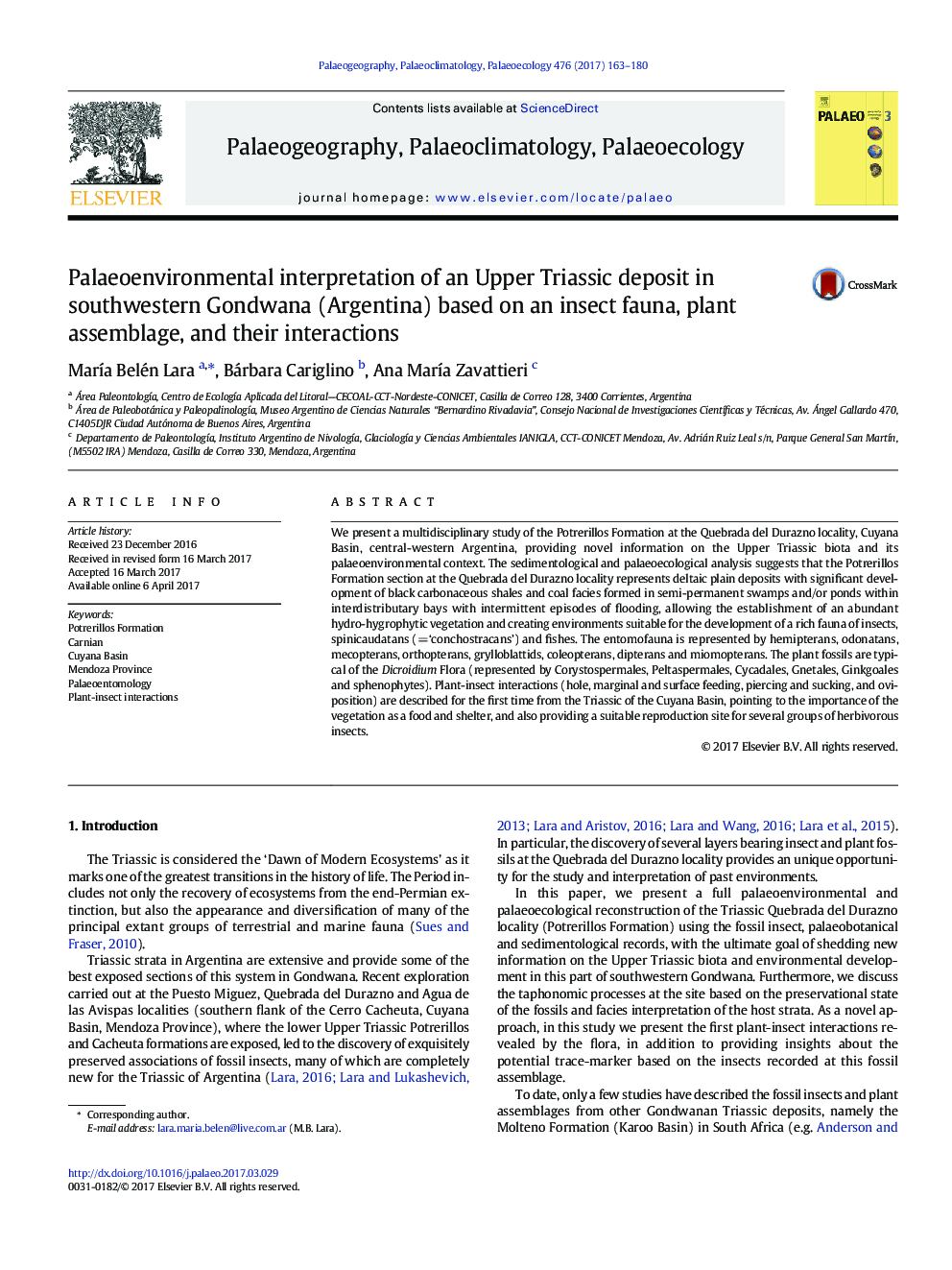| Article ID | Journal | Published Year | Pages | File Type |
|---|---|---|---|---|
| 5755893 | Palaeogeography, Palaeoclimatology, Palaeoecology | 2017 | 18 Pages |
Abstract
We present a multidisciplinary study of the Potrerillos Formation at the Quebrada del Durazno locality, Cuyana Basin, central-western Argentina, providing novel information on the Upper Triassic biota and its palaeoenvironmental context. The sedimentological and palaeoecological analysis suggests that the Potrerillos Formation section at the Quebrada del Durazno locality represents deltaic plain deposits with significant development of black carbonaceous shales and coal facies formed in semi-permanent swamps and/or ponds within interdistributary bays with intermittent episodes of flooding, allowing the establishment of an abundant hydro-hygrophytic vegetation and creating environments suitable for the development of a rich fauna of insects, spinicaudatans (='conchostracans') and fishes. The entomofauna is represented by hemipterans, odonatans, mecopterans, orthopterans, grylloblattids, coleopterans, dipterans and miomopterans. The plant fossils are typical of the Dicroidium Flora (represented by Corystospermales, Peltaspermales, Cycadales, Gnetales, Ginkgoales and sphenophytes). Plant-insect interactions (hole, marginal and surface feeding, piercing and sucking, and oviposition) are described for the first time from the Triassic of the Cuyana Basin, pointing to the importance of the vegetation as a food and shelter, and also providing a suitable reproduction site for several groups of herbivorous insects.
Related Topics
Physical Sciences and Engineering
Earth and Planetary Sciences
Earth-Surface Processes
Authors
MarÃa Belén Lara, Bárbara Cariglino, Ana MarÃa Zavattieri,
